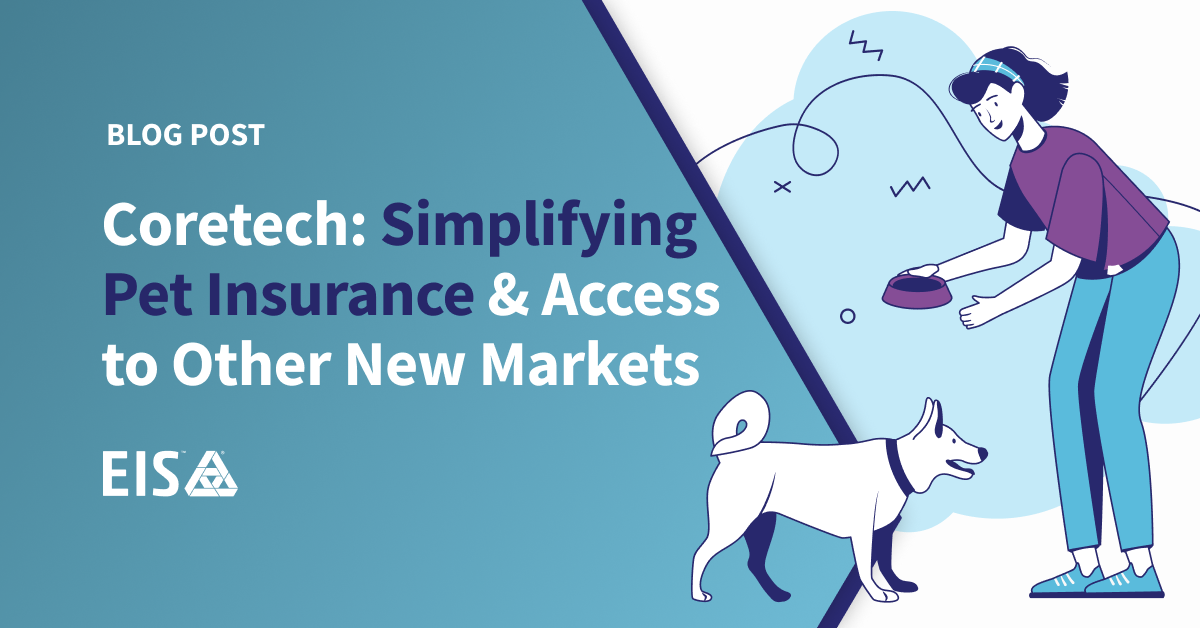Lassie, the beloved Rough Collie who adorned TV screens throughout the 1950s, ’60s and ’70s, was famous for the devotion and loyalty she showed toward her owner.
But that wasn’t all. Lassie is also known in insurance circles as the first pet ever to receive pet insurance coverage. Beginning with Lassie in 1982, Veterinary Pet Insurance became the first company licensed to sell pet insurance, and its operations quickly expanded.
Since then, other insurers have entered the pet insurance market, recognizing a significant opportunity in a country where 90.5 million families own pets, according to the American Pet Products Association.
As pet ownership continues to grow, however, insurers keen to take advantage of this opportunity have to revamp their outdated legacy systems with faster, more efficient coretech to create and manage new products and better connect with external partners and customers.
Pet insurance: From property and casualty to workforce benefits
Pet insurance has traditionally been offered under the property and casualty umbrella, but recent market trends are making it an attractive proposition for other types of insurers looking for new markets. COVID-19 restrictions confined many people to their homes, and some of them chose to fill their newfound freetime with new pets. This surge in pet adoption also increased the demand for pet insurance coverage, which earned some pet insurers handsome returns.
The pandemic also caused employees to rethink their work-life priorities, fuelling the Great Resignation and forcing employers to sweeten their compensation packages to improve their hiring and retention practices. Pet insurance as a group benefit is quickly becoming a priority for both employees and employers. In fact, according to MetLife, almost three-quarters of people consider pet insurance an essential or almost essential employee benefit.
Legacy systems can’t support new markets
The trends above have caused a seachange in the pet insurance market, creating new opportunities for incumbents and insurtechs alike.
One of the world’s largest pet insurance providers recognized this opportunity and started to build strategic plans to go after the marketplace.
While the pet insurer could handle underwriting tasks, it didn’t have the requisite infrastructure to address billing requirements for a group benefits product. So they began shopping for other systems that would enable them to deliver a unique product: group pet insurance. It not only would need to scale but also offer innovative approaches to billing and product development that their existing tech – a modern legacy P&C platform – couldn’t handle.
Further complicating the problem is that as incumbent insurers move away from the captive agent model — like the pet insurer did in the above example — legacy systems make it even more difficult to facilitate integrations with external partners and manage the digital user experience. Many agents and brokers can choose where to place business and don’t want to work with slow and clunky systems, making it difficult for insurers to unlock the enormous business opportunities in today’s insurance market.
Cloud-native coretech provides the flexibility needed to create new products
The above pet insurer needed the ability to build and revise their pet insurance benefits product. Again, their outdated administration systems made this extraordinarily difficult, and that’s what led them to EIS.
EIS’ cloud-native coretech solutions enabled this pet insurer to build their products around specific customer needs, not restrictive policy considerations. Our low-code/no-code tooling makes it fast and easy for business users to design new insurance products, bring them to market, and address new billing and administration needs.
Our solutions also make it easy to consolidate P&C and benefits insurance products onto a single platform. That means insurers don’t have to support multiple systems – or hire the personnel with the skill sets needed to manage those systems – saving resources and ensuring their operations remain lean and nimble.
EIS gives insurers the ability to respond to unique market dynamics to stay competitive, partnering with some of the world’s leading insurers to help transform their core systems and power innovation.
Learn how we can help you launch into pet insurance and other market segments.
Want to learn more about EIS? Talk to us.




